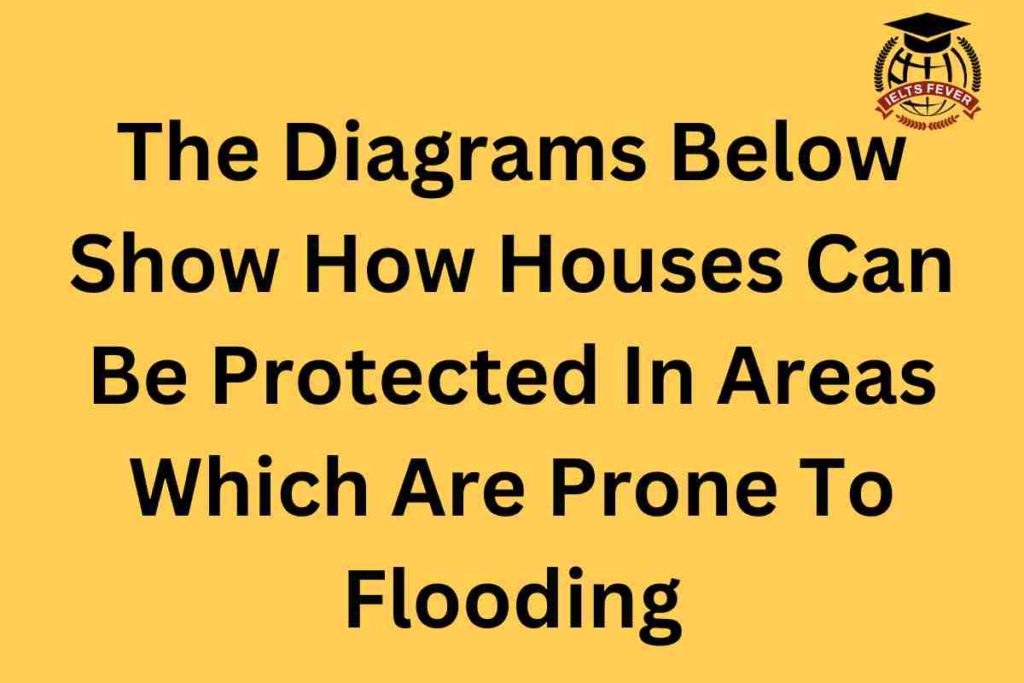The diagrams below show how houses can be protected in areas which are prone to flooding. Summarize the information by selecting and reporting the main features, and make comparisons where relevant.
Sample 1 The Diagrams Below Show How Houses Can Be Protected In Areas Which Are Prone To Flooding
The provided images illustrate how buildings can be protected in flood-prone locations. Overall, there are two methods to safeguard houses: with and without stopbanks.
Looking at the first diagram, a large stopbank is created on the left side of the building, and on the right side, internal runoff comes from the clouds. The building is situated in the centre of these two, where an internal ponding area is formed. Moreover, floodgates are available at the stopbank, which releases internal ponding water into the river.
In the second image, a building is located near the river, and no stopbank is constructed. In this case, the building is raised 300 mm above the water level, and the 100-year flood/ponding level remains below the house floor level.
Sample 2
This diagram compares two different defence methods for homes at risk for flooding.
The main difference in both diagrams is that slowing down the flood level by using a stopbank, while in another case, instead of using a stopbank, building the house at the risk of high water level.
This first picture shows how a stopbank is used as a protective barrier to stop river water from flooding homes. The stopbank is placed next to the river bank, which is higher than the 100-year flood level, preventing the house from bursting. And nearby houses are built on stilts to prevent flooding water from rainwater, and a floodgate beneath the stopbank can be opened to allow this ponding to drain off into the river.
In the second diagram, without any stopbank, there will be nothing to stop the water from flooding. In this scenario, the solution is to build houses on stilts. The height of the house should be higher than the river water level, approx. 300mm. This measurement is known as the “freeboard” system.

